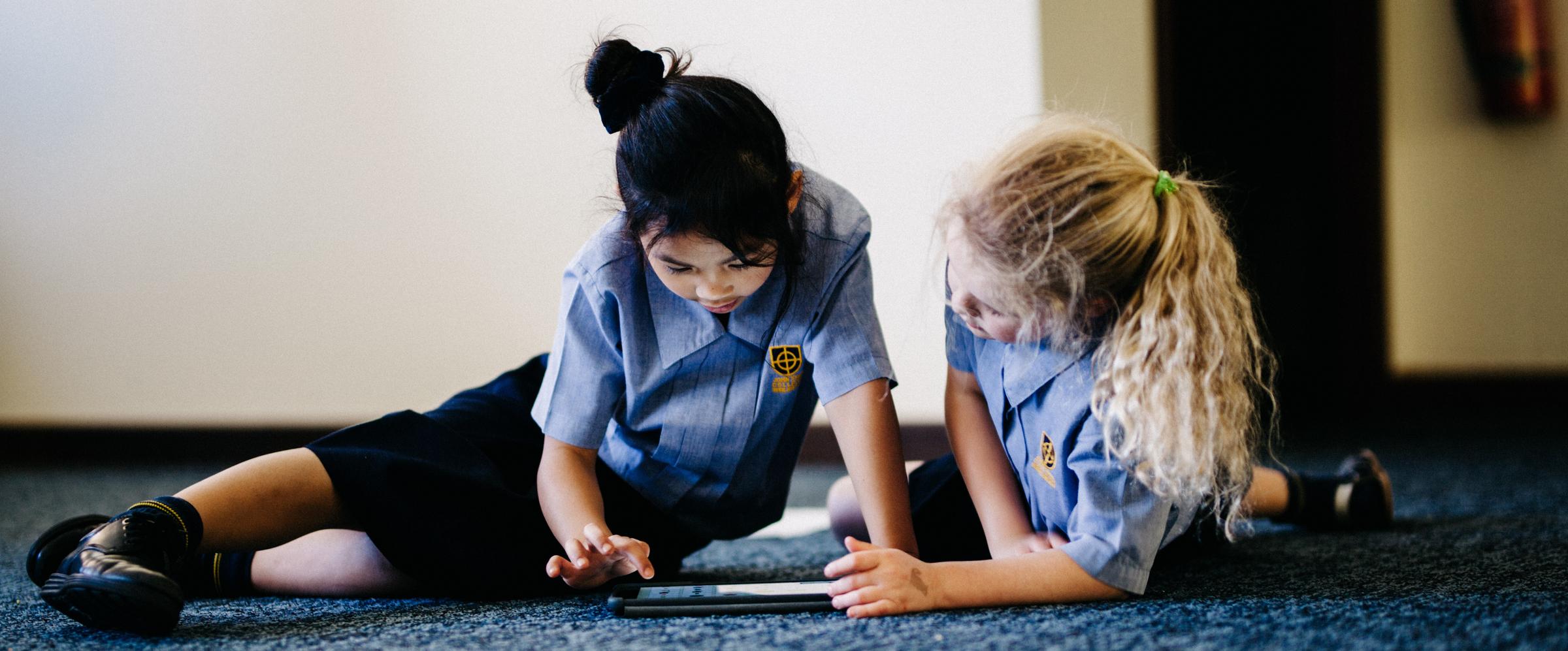Cyber Safety

Cyber Safety Hub
The Hub includes expert advice on the most pertinent cyber safety issues and frequently asked questions around platforms like TikTok, Fortnite, Instagram, and more. There are app reviews with age and safety recommendations, a range of guides and resources to help ensure healthy boundaries around screen time and gaming, and step-by-step instructions for using parental controls and filtering out inappropriate content.
How to get Help with Qustodio as a Parent
This video provides parents with a practical guide for how they can get help with their Qustodio Parent tools.
Empathise & empower: Helping your child report cyberbullying
Just like how shopping, banking, dating, and almost everything else has been transformed by the digital age, so has bullying.
Of course, the traditional schoolyard menace still exists. But today’s bullies can hide behind their phones and computer screens, and make your child’s life a misery 24/7.
And, with children worldwide spending approximately 4 hours a day on their personal devices, cyberbullying is a serious parenting issue that won’t be going away soon.
The urge to fight a child’s battles is strong for any parent. But, it’s important for their development that they know how to identify and report cyberbullying themselves.
What is cyberbullying?
The Cyberbullying Research Center defines cyberbullying as “willful and repeated harm inflicted through the use of computers, cell phones, and other electronic devices.”
Cyberbullying can involve sending, sharing, or posting harmful content about others; and spreading private information about someone with malicious intent.
A cyberbully is different from an online troll in that they often target someone they know from school or elsewhere in the real world. Social media and other platforms have allowed cyberbullies to remain anonymous and minimize the risk of being caught.
Cyberbullying can occur wherever people interact online, on forums, games, messaging apps, and email; but it’s social media where cyberbullying is its most notorious.
A survey of 10,000 teenagers showed that the highest percentage of social media cyberbullying occurs on Instagram, followed by Facebook and Snapchat.
What are some signs your child is being cyberbullied?
As just 40% of victims report cyberbullying to their parents, it’s important that you’re able to spot the warning signs so that you can give them the support they need.
Indicators that your child is being cyberbullied might include not wanting to go to school, a lack of interest in technology, changes in sleep and eating habits, and secretiveness. We’ve outlined more tell-tale signs of cyberbullying in this in-depth article.
What should you do if you think your child is being cyberbullied?
Finding out that your child is being bullied online is a distressing discovery for any parent. Here are some ways you can help them during this challenging time:
Stay calm
Your first instinct might be to cry or smash something in anger, but it’s much more helpful to establish a relaxed environment where your child can open up and feel heard.
Offer comfort and support
Heap praise onto your child for doing the right thing by coming to you. Let your child know that they’re not alone in this and you’re always there for them to talk to. It’s also a good idea to share personal experiences.
Don’t take their devices away
It might be tempting to take an “out of sight, out of mind” approach and ban your child from using their phone or computer.
This is not recommended as your child may feel they are being punished and that they’ve done something wrong. Also, children use their devices to keep in touch with their friends and you want to encourage positive connections at this difficult time.
Instead of removing devices entirely, consider using a parental control app like Qustodio to manage your child’s screen time, monitor usage, and pause the internet at the touch of a button.
Assure them that it’s not their fault
It’s common for victims of cyberbullying to blame themselves with thoughts like, “They’re singling me out because there’s something wrong with me.” Assure them that this isn’t true and the blame lies 100% on the bully.
Get the facts
Without interrogating, try to establish the severity of the cyberbullying and how badly it’s affecting your child. Sometimes a bully’s behavior may not seem that bad but it can still have a strong impact on a child’s mental health.
Empower your child
It’s been said that we as parents shouldn’t try to child-proof the world, but rather world-proof the child. Our goal should always be to build our children’s confidence so that they can better face the challenges life throws at them.
With cyberbullying, this might mean showing them how to report incidents, collect evidence, or block bullies themselves.
However, if your child is being threatened or cyberbullying is causing them to want to harm themselves, then you must seek professional help.
When to report cyberbullying to the police
Sometimes cyberbullying goes beyond name calling and trolling, and becomes a crime. If there have been incidents of any of the following, then they should be reported to law enforcement.
- Threats of violence
- Child pornography or sending sexually explicit messages or photos
- Taking a photo or video of someone in a place where he or she would expect privacy
- Stalking and hate crimes
How to help your child report cyberbullying
Making sure your child knows how to report incidents of cyberbullying is a good way to build their confidence and resilience – both on and offline.
1. Advise them not to retaliate or respond
Sometimes cyberbullies say unkind things to get a rise out of others. By responding to them, your child might be playing into their hands and make the situation worse.
Instead, encourage your child to stop replying and make sure they know how to ignore, mute, or block the bully in whichever app they’re using.
You can also show your child how to change their privacy settings so that certain people cannot see their posts and profile.
2. Show them how to collect evidence
Most social media platforms will require you to submit evidence as part of your report. So, show your child how to save screenshots, messages, posts, pictures, and other materials that show the extent of the abuse. Keeping a record of the dates and times too will help prove how long the bullying has been going on.
3. Read the community guidelines together
Community guidelines are essentially a set of rules that explain how a user is expected to behave on a platform. They usually clarify what is and isn’t allowed and outline the consequences if any of the rules are broken.
Going through the guidelines together is an opportunity to discuss appropriate online behavior, and why the cyberbully’s actions go against the platform’s rules and policies.
All major online platforms have community guidelines, including Instagram, Facebook, Snapchat, and (X) Twitter.
4. Go through the reporting process together
Thankfully, most platforms where cyberbullying is a possibility make reporting incidents a simple process. But it’s still a good idea to go through the process together, at least for the first time.
Before you begin, make sure you have the screenshots and other evidence ready as you’ll be asked to attach them to show that the cyberbully’s conduct has violated the terms of service.
To make it easier for you both, here are links to the relevant pages on Instagram, Facebook, Snapchat, and Twitter, where you can file the reports.
- Report harassment or bullying on Instagram
- Report content on Facebook
- How do I report abuse or illegal content on Snapchat?
- Staying safe on X (Twitter) and sensitive content
5. Stay aware
After you’ve reported the cyberbullying, we recommend that you check in with your child regularly. The impact of cyberbullying might be more subtle and longer-lasting than you expect.
If necessary, consider seeking support from a counselor or a therapist to help your child work through feelings that might have been stirred up by the harassment.
What you can do to help prevent future cyberbullying
While you can’t completely remove the risk of cyberbullying, you can help prevent your child from becoming a victim by making sure they know how to block users and report harassment.
Child psychologist Dr. Nicole Buerkens recommends having open and meaningful conversations with children about being kind on the internet. As tech-savvy as they may seem, kids require guidance as they encounter more challenging and problematic behavior online.
Many families choose to use an all-in-one parental control app like Qustodio to help minimize the risk of cyberbullying and encourage healthy screen time habits.
Qustodio allows you to detect signs of cyberbullying by monitoring your child’s browsing history, social media use and other online activities. You can also reduce your child’s exposure to online threats by setting screen time limits blocking problematic apps and contacts and more.
Reference: https://www.qustodio.com/en/blog/help-your-child-report-cyberbullying/


